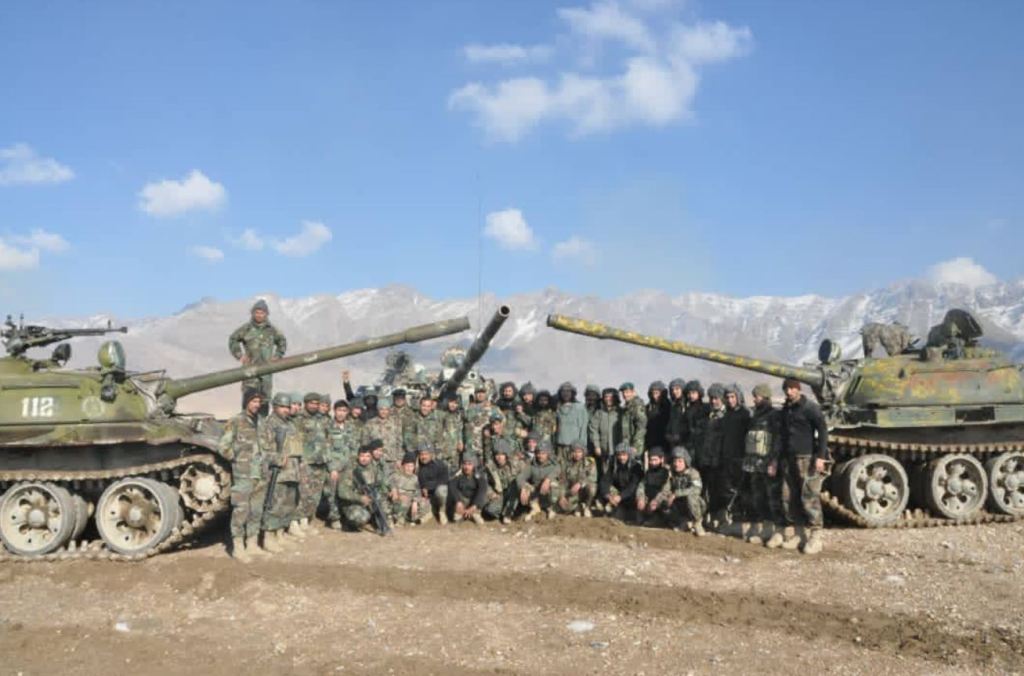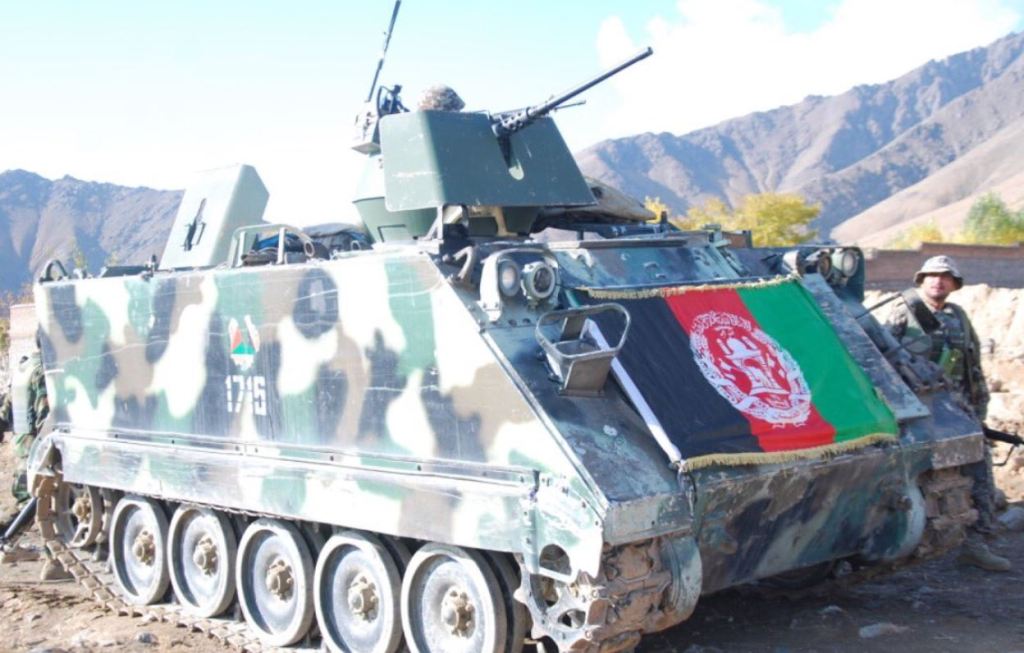The Afghan Army Keeps Its Old Armor Working

Recent photos shared by Afghanistan’s defense ministry on social media brought to light an important, if ignored, aspect of the embattled country’s armed forces–its tanks and mechanized transports. Apparently, some tanks dating to the Soviet-Afghan War (1979-1989) remain in service and now form an armored battalion as part of the 111 Regiment stationed outside Kabul. The photo released by the MoD showed one T-62 medium tank flanked by two T-55 medium tanks. The exact number of tanks operated by the Afghan National Army (ANA) today is unknown. At 171,000 strong the army is reliant on various armored trucks supplied by different partners for its mission.
The T-55 and T-62 are the most widely produced tanks of the 20th century. A high estimate of 53,000 T-55’s were manufactured by the former Soviet Union and while it’s now considered obsolete many cost-effective upgrades are available for it. A new fire control system with thermal imagery is just one option for end users and 105mm main guns can be easily fitted into its turret, with ammunition storage unaffected. If it were up to China and Russia third-generation subsystems are available for T-55/Type 59/69 tanks including a firepower upgrade with a 125mm 2A46 main gun. The ANA isn’t unique in fielding T-55’s despite their age since neighboring militaries such as China, Iran, and Pakistan keep their aging T-series tanks in service.
The history of these battered models in Afghan service goes back half a century. The withdrawal of all Soviet troops from Afghanistan in early 1989 didn’t mean the end of Moscow’s involvement. For a handful of years economic and military aid still reached Kabul as it kept fighting the mujahideen factions supported by the United States and its allies. Reliable Soviet backing meant the Afghan army then had an impressive arsenal on paper; at least a thousand medium tanks like the T-62 suited for the country’s geography and a modern air force. Combined with Soviet-trained special forces, a modest collection of ballistic missiles, and an advanced air defense inventory, and the ANA could give any hostile neighbor pause.

But underneath all the hardware supplied by its Soviet patron the Afghan military was seething with discontent. Desertion took its toll on manpower, whittling its numbers to no more than 40,000 active troops at any given year. The problem was exacerbated by a conscription system that relied more on forcing young men into service rather than mobilizing fresh recruits. The same problems that plagued the Soviet Army in Afghanistan extended to the ANA–corruption and profiteering were rife. When the Soviet Union collapsed in 1991 it was no surprise Pres. Mohammad Najibullah’s regime lasted barely a year.
It wasn’t until 2005 when the US and its NATO allies began to rebuild the ANA by pouring billions into training and equipment. That same year several dozen M113A2 armored personnel carriers (APCs) and command vehicles were transferred to the ANA from US excess defense articles. Earlier this month the MoD shared additional photos of ANA armor including the M113A2 that’s used in much the same way as during the Vietnam War, with its occupants huddled on the roof since the APCs interior is too vulnerable against mine blasts. The ANA’s weaponry on the M113A2 hearkens to Vietnam as well with the main armament, which is enclosed by a protective cupola, complemented by two light machine guns on either side of the roof.
The primary combat vehicle of the ANA, however, is the M1117 armored car or Mobile Strike Force Vehicle (MSFV) manufactured by Textron Systems. Several hundred are in service and provide optimal protection when compared to older Soviet vintage APCs such as the BRDM-1, BTR-40, BTR-60, and even the BMP-1. But the M1117 isn’t invulnerable and is lightly armed when compared to other current-generation wheeled APCs. The real workhorse of the ANA in its endless struggle to recapture territory from the Taliban is the AM General Humvee with as many as 6,000 now delivered. In late 2020 the US donated 1,383 Humvees and vast amounts of infantry equipment worth more than half a billion dollars to the ANA.
All of this support hasn’t come cheap. Since 2002 the US military’s direct funding of the ANA reached $68 billion and this financial lifeline stays in place for years to come. Even with a full US withdrawal from Afghanistan in the works the ANA’s organization and infrastructure requires additional funds and logistics paid for by Washington, DC.













Comments are closed.